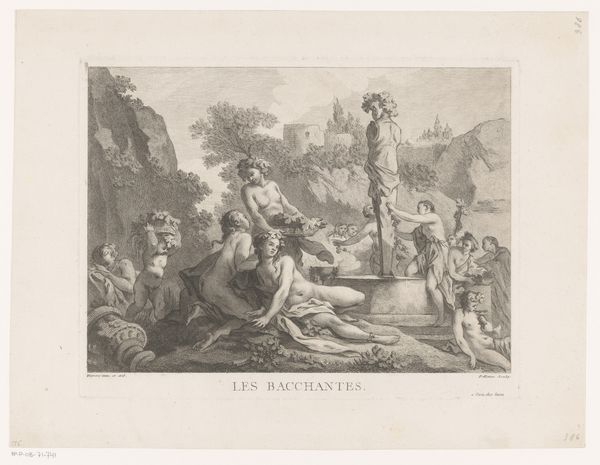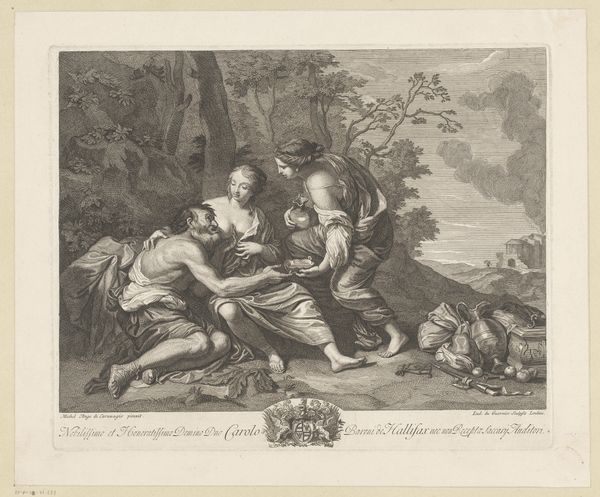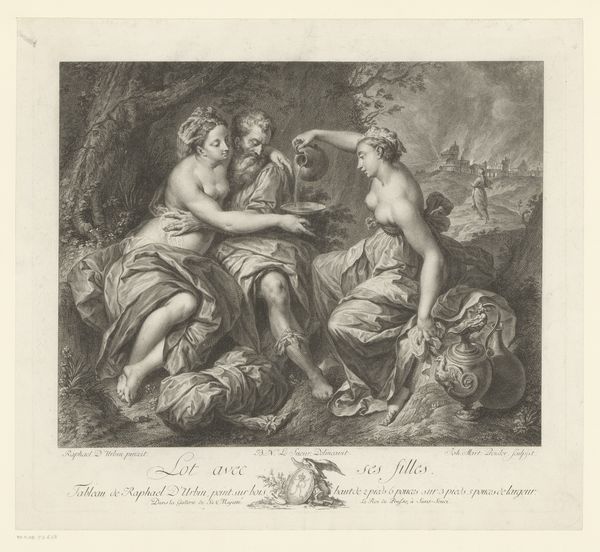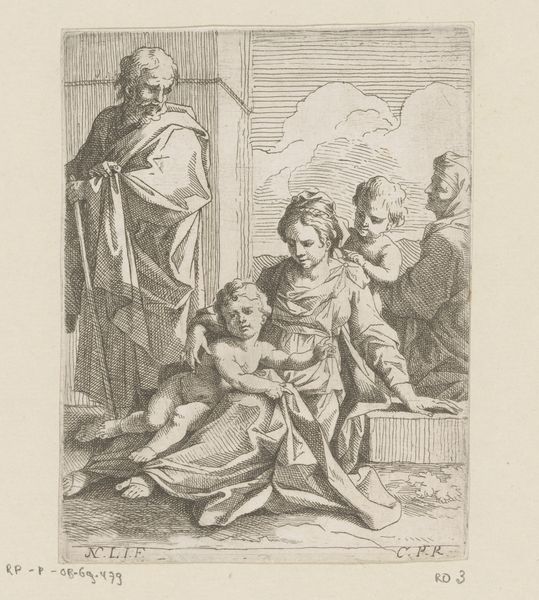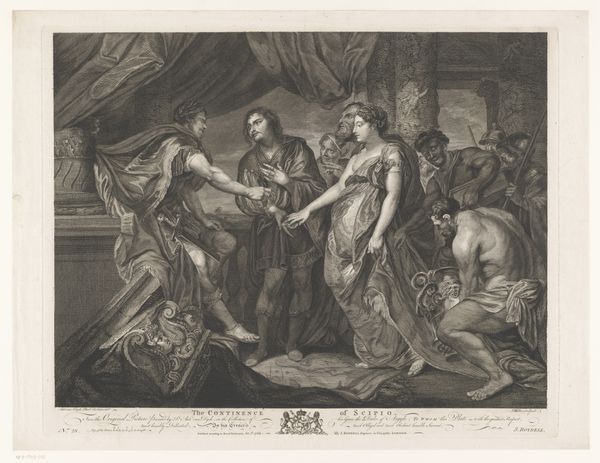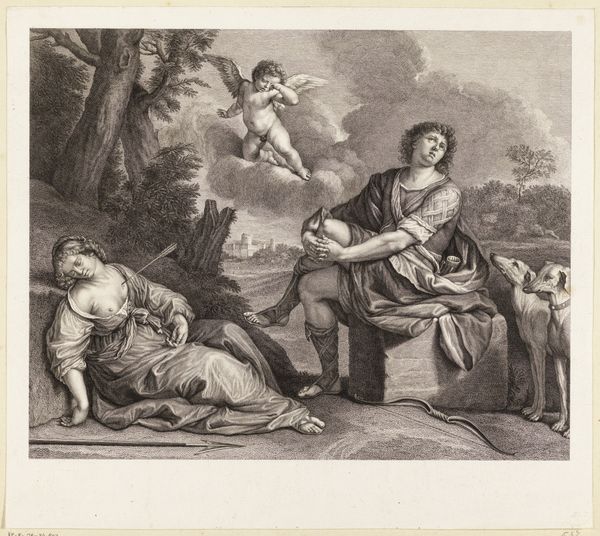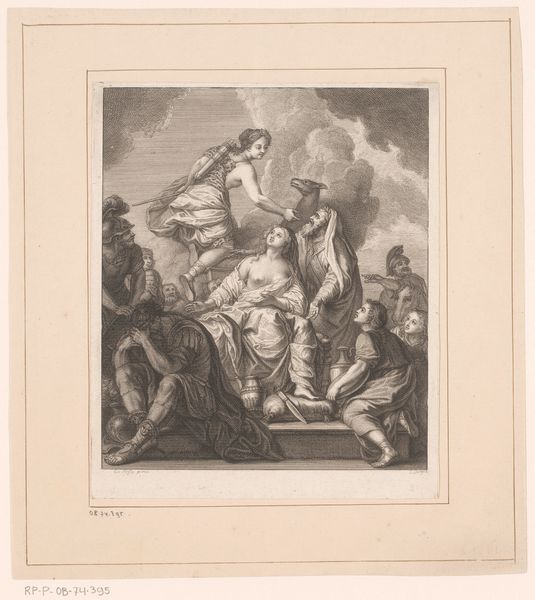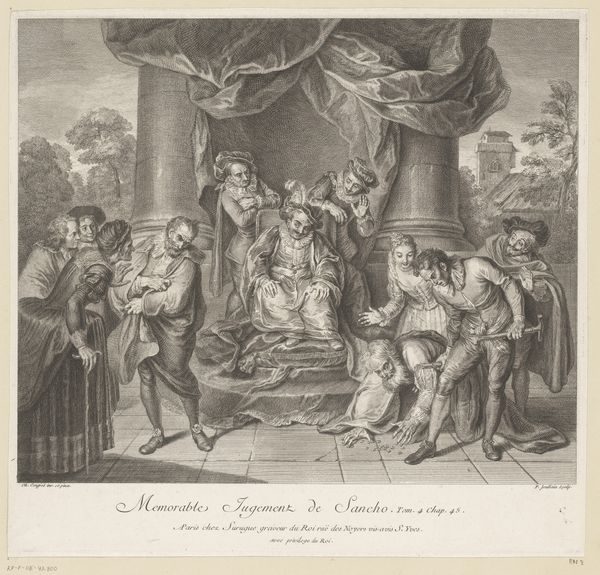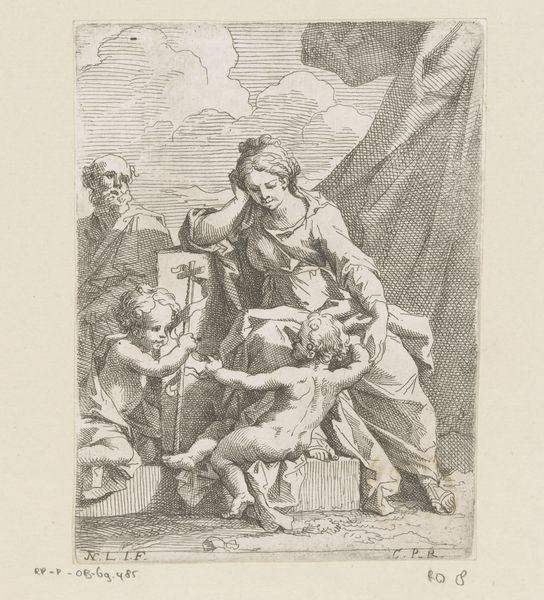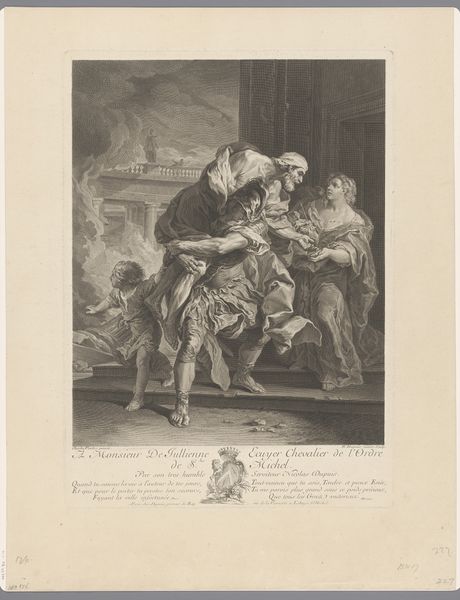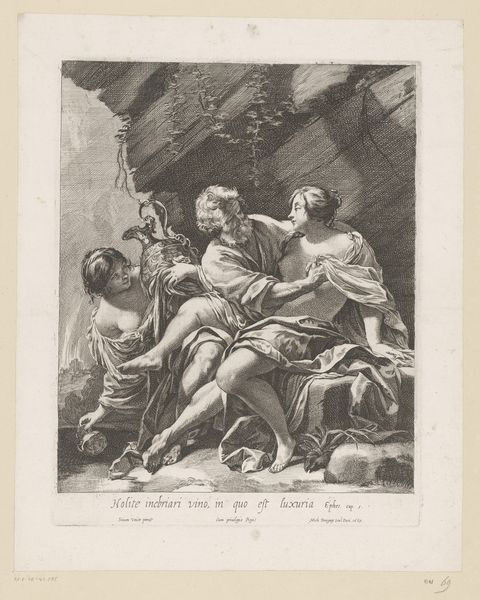
Dimensions: height 356 mm, width 352 mm
Copyright: Rijks Museum: Open Domain
Editor: This engraving, “Allegorie op de komedie” by Manuel Salvador Carmona, dating somewhere between 1744 and 1820, presents a somewhat theatrical scene. It has this interesting mix of formality and playfulness. What jumps out to you when you look at it? Curator: The emphasis on “Tirée du Cabinet de Madame la Marquise de Pompadour” firmly locates its production and consumption within a specific socio-economic sphere. Note the inscription which roots the image not just in artistic skill, but in its relationship to a powerful patron and the means by which art becomes intertwined with aristocratic identity and the mechanisms of display. What do you think that connection between the work and Madame de Pompadour might mean in terms of the work’s value? Editor: So, the value isn’t just in the artist’s hand or the allegory depicted, but where it resided, whose cabinet it came from. It becomes, in a sense, a commodity associated with a social class. How would that affect its interpretation at the time, or even now? Curator: Exactly. The print isn’t simply a representation of comedy. It’s an object produced and circulated within a system of patronage and privilege. We must consider how the engraving's material presence and social circulation contributes to a specific type of viewing and understanding inextricably tied to wealth, power, and modes of representation. Editor: I see how that shift changes my understanding of it, from a timeless representation to a historical object produced within and speaking to a specific cultural moment. Thank you! Curator: Absolutely. By examining the context of the art-making, we’re engaging with social narratives embedded in it and also changing our relationship with the art.
Comments
No comments
Be the first to comment and join the conversation on the ultimate creative platform.
